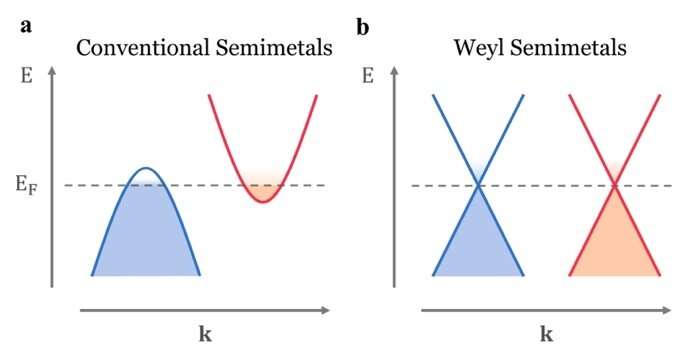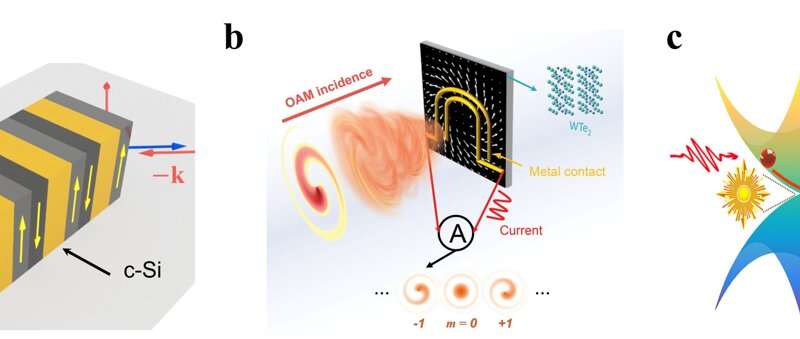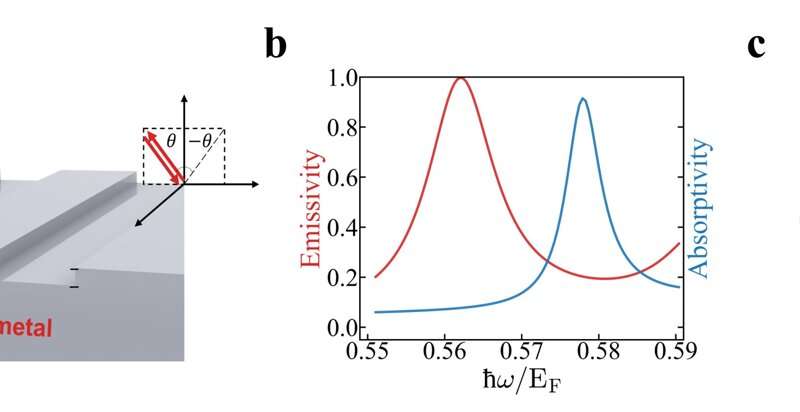This article has been reviewed according to Science X's editorial process and policies. Editors have highlighted the following attributes while ensuring the content's credibility:
fact-checked
trusted source
proofread
Review of photonics based on Weyl semimetals

Weyl semimetals are topological materials whose low-energy excitations obey the Weyl equation. In a Weyl semimetal, the conduction and valence bands touch at discrete points in momentum space called Weyl nodes. Weyl nodes are monopoles of the Berry curvature and are robust under generic perturbations. The quasiparticles near the Weyl nodes are analogous to Weyl fermions in high-energy physics; they exhibit linear dispersion and well-defined chirality.
In a new paper published in eLight, a team of scientists led by Professor Shanhui Fan at Stanford University has reviewed the basic concepts and optical responses of Weyl semimetals.
The non-trivial topology of Weyl semimetals leads to many unusual electronic, magnetic, thermal, and optical properties. These intriguing features have been extensively studied in the literature. Besides these fundamental interests, Weyl semimetals may also enable new opportunities in practical applications. For example, photonic applications include compact optical isolators and circulators, orbital angular momentum detectors, higher-order harmonic generation, and non-reciprocal thermal emitters. However, such an application-oriented exploration is still at an early stage, which requires more joint efforts from scientists and engineers.
Weyl semimetals are a special class of semimetals. They exhibit common properties of semimetals as well as some unique characteristics. According to band theory, solids can be classified as insulators, semiconductors, semimetals, and metals. An insulator or a semiconductor has a band gap between the valence and conduction bands; the band gap is more significant for an insulator than for a semiconductor. A semimetal has a minimal overlap between the conduction and valence bands and a negligible density of states at the Fermi level. A metal has a partially filled conduction band and an appreciable density of states at the Fermi level.
-

(a) Optical isolation. (b) Direct OAM detection. (c) High harmonic generation. Credit: Cheng Guo, Viktar S. Asadchy, Bo Zhao and Shanhui Fan -

(a) A nonreciprocal thermal emitter. (b) The absorptivity and emissivity spectra of the device in (a) at a given incident angle. (c) A radiative thermal router. Credit: Cheng Guo, Viktar S. Asadchy, Bo Zhao and Shanhui Fan
The researchers provide their outlook on future works on the emerging topic of photonics based on Weyl semimetals. So far, most works on Weyl semimetals focus on novel physics. Engineers have tremendous challenges and opportunities to make these physical effects practically useful.
There are many opportunities, including the synthesis of high-quality and large-area Weyl semimetals and the fabrication of photonic devices based on Weyl semimetal materials. Other options include the design of photonic structures to enhance the light-matter interactions in Weyl semimetals and photon management to enhance the light absorption and photocurrents in Weyl semimetals. Indeed, many efforts must be undertaken to construct practical devices from Weyl semimetals.
More information: Cheng Guo et al, Light control with Weyl semimetals, eLight (2023). DOI: 10.1186/s43593-022-00036-w
Provided by Chinese Academy of Sciences





















